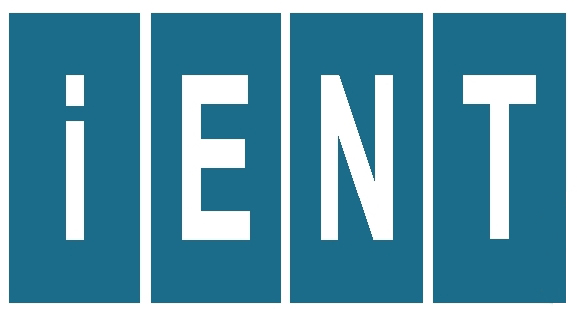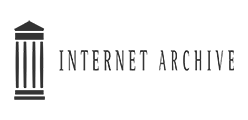Guidelines for Authors Preparing Manuscripts
Manuscripts must be submitted by one of the authors of the manuscript, and should not be submitted by anyone on their behalf. The submittig author takes responsibility for the article during submission and peer review. To facilitate rapid publication and to minimize administrative costs, Journal of Environmental Nanotechnology accepts online submission, or to send email their manuscript to the Editor-in-chief to the following address:editorjent@gmail.com
During submission you will be asked to provide a cover letter. Use this to explain why your manuscript should be published in the journal, to elaborate on any issues relating to our editorial policies in the about JENT page, and to declare any potential competing interests. You will be also asked to provide the contact details (including email addresses) of potential peer reviewers for your manuscript. These should be experts in their field, who will be able to provide an objective assessment of the manuscript.
Any suggested peer reviewers should not have published with any of the authors of the manuscript within the past five years, should not be current collaborators, and should not be members of the same research institution. Suggested reviewers will be considered alongside potential reviewers recommended by Editorial Board members or other advisers. If your article is part of a special issue, please note this within your cover letter.
Corresponding Author
Clearly indicate who is responsible for correspondence at all stages of refereeing and publication, including post-publication. Ensure that telephone and fax numbers (with country and area code) are provided in addition to the e-mail address and the complete postal address. Full postal addresses must be given for all co-authors. Authors are also requested to download, complete, sign, and send back by e-mail the copyright form, which can be downloaded from www.nanoient.org/jent/copyright.html
File formats
The following word processor file formats are acceptable for the main manuscript document:
- Microsoft Word (version 2 and above)
- Preparing main manuscript text
- General guidelines of the journal's style and language are given below.
- Manuscripts for Original research articles submitted to Journal of Environmental Nanotechnology should be divided into the following sections (JENT Paper Format).
Title page
The title page should list the title of the article, the full names, institutional addresses, email addresses for all authors. The corresponding author should also be indicated.
Title
A title should describe the article's content clearly and precisely and allow the reader to decide whether it would be appropriate to consult the article further. The title is the advertisement for the article; a poorly titled article may never reach its target audience, so be specific. Omit unnecessary words such as "A study of," "Investigations of," "Observations on," etc. Do not use abbreviations, jargon, and avoid over inflated, bombastic titles. Indexing and abstracting services depend on the accuracy of the title and extract keywords from it that are used in cross-referencing.
Abstract
The Abstract of the manuscript should not exceed 250 words and must be structured into three separate sections:
Keywords
Three to Five keywords representing the main content of the article.
Results and discussion
The Results and discussion may be combined into a single section or presented separately. The Results and discussion sections may also be broken into subsections with short, informative headings.
Conclusions
This should state clearly the main conclusions of the research and give a clear explanation of their importance and relevance. Summary illustrations may be included
Experiments/Methods
The methods section should include the design of the study, the setting, the type of participants or materials involved, a clear description of all interventions and comparisons, and the type of analysis used, including a power calculation if appropriate.
Acknowledgements
Please acknowledge anyone who contributed towards the article by making substantial contributions to conception, design, acquisition of data, or analysis and interpretation of data. Please also include the source(s) of funding for each author, and for the manuscript preparation. Please also acknowledge anyone who contributed materials essential for the study.
Table and Figures
- Briefly and descriptively title each table and caption each figure. Place table title above the table. Place figure caption below the figure.
- Make sure you place figures in the manuscript in the exact position you want them to appear. If you are submitting figures as separate files, make sure you indicate the position of figures in the manuscript.
- Figures must be in high resolution, which is suitable for reproduction and print. High resolution starts at 300 DPI for .JPEG and . TIFF formats. Color figures are welcome.
- Figure captions must be saved separately, as part of the file containing the complete text of the paper, and numbered correspondingly.
- Place figures/ table as close as possible to the first reference to them in the manuscript.
- Allow one line of space between the table title and the table (or between the figure and its caption): Allow two lines of space between the table or figure and the adjacent text.
- In general, tables and figures should not repeat data available elsewhere in the paper.
- Nomenclature and abbreviations should agree with forms used elsewhere in the paper.
- Number consecutively with single Arabic numerals (e.g. Fig. 1, Fig. 2, Table 1, Table 2)..
- The figure/table caption should be properly centered as follows:
Fig. 1 Amount of Removal, mg/g
Tables
- If too wide to fit on the page, a table may be placed broadside (i.e., rotated 90 degrees, counter clockwise). Such a large table counts as one page in the quota allowed for each paper.
- Avoid submitting tables in image formats (e.g. .jpeg, or tiff). If you are submitting tables as separate files, make sure you indicate the position of tables in the manuscript.
- Each table should be given a number in Arabic numerals. All tables must be incorporated into the text in Portrait orientation. Table footnotes should be identified by superscript symbol.
Figures
High-quality reproduction of illustrations depends on the condition of the original art work. It should be prepared as carefully as the text.
Figures should be ready for direct reproduction without further changes (editorial changes will not be made to figures). Each figure should be scaled to fit an 8.5 x 11 inch page (it should fit either in a 3.5 inch SIGNLE column or 7 inch DOUBLE columns of a printed page).
Except for the rare figure that contains an unusual amount of detailed information, all figures should occupy no more than 1/2 page.
Symbols must be distinct and large enough to retain their individual characteristics when reduced. Indicate coordinate values by tick marks along all four coordinate axes. Rule the coordinate axes and ticks in fine line weight; draw the graph in heavy line weight.
Line figures should be placed within the margins. Be certain that labels and data points will be legible after reduction.
Glossy prints, photostats, or reprints of drawings may be used if high quality with sharp, even lines and lettering.
Structure
Follow the provided template at www.nanoient.org when preparing your manuscripts.
Proofs
Proofs will be sent to the corresponding author and should be returned with one week of receipt. Corrections should be restricted to typesetting errors. Authors are advised to check their proofs very carefully before return, since the inclusion of late corrections cannot be acceptable.
Citation and References
Citation to work by four or more authors should be abbreviated with the use of et al. (e.g. Manel et al., 1999). Citation to work by one, two or three authors should always give the author names in full. Work with the same first author and date should be coded by letters, e.g. Thompson et al., 1991a,b. Citations should be listed in chronological order in the text and be separated by a semi-colon, e.g. Balmford & Gaston 1999; Royle et al., 2007. Work not yet submitted for publication or under review should be cited as 'unpublished data', with the author's initials and surname given; such work should not be included in the Reference section.
References
Reference in the text should be mentioned by name and not by numbers. The reference should be given at the end of the manuscript arranged alphabetically in the following pattern and abbreviate journal titles according to standard forms:
Journal Articles
- Attar, H.F., Characterization of Paralytic Light Naphtha from Vacuum Pyrolysis of Tire, Fluid Mech., 67 (11), 65-84 (1975).
- Hari, M.P., Roy, D.B., Moorthy, J.B. and Bodkey, R.G.N., Extending Ellenberg's indicator values to a new area: an algorithmic approach, J. Environ. Nonotechnol., 37, 3-15 (2007).
Books
- Kays, W.M. and London, A.L., Compact Heat Exchangers, 2nd Ed., Mc Graw Hill, New York, 97-108 (1984).
Paper in Edited Books
- 3. Roy, C., Pakdel, H. and Labrecque, B., Vacuum Pyrolysis of Used Tires, J.P. Hartnett and T.F. Irvine, Eds., Vol. 8, 212-235, Academic Press, New York (1973).






